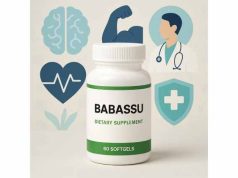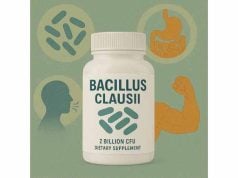
Black horehound (Ballota nigra) stands out among herbal remedies for its unique profile in traditional and modern wellness. Known for its distinct aroma and earthy flavor, this Mediterranean herb has been used for generations to ease digestive issues, soothe nerves, and address motion sickness. Today, black horehound is found in teas, tinctures, and supplement blends, where its natural compounds are being rediscovered for supporting respiratory health and calming mild gastrointestinal discomfort. Whether you’re exploring natural remedies for nausea, searching for a gentle way to ease occasional cough, or simply curious about its botanical heritage, understanding black horehound’s properties, uses, and safety is essential for making informed wellness choices.
Key Takeaways
- Traditional nausea remedy: Black horehound is most recognized for reducing nausea and motion sickness.
- Digestive & respiratory support: The herb is commonly used for digestive upset, nervous stomach, and mild coughs.
- Calming effects: Contains plant compounds that gently relax nerves and muscles.
- Not for pregnancy: Black horehound should be avoided during pregnancy and breastfeeding.
- Interactions possible: Use caution with prescription medications; consult a healthcare provider.
Table of Contents
- Black Horehound Overview and Traditional Uses
- Active Compounds and How Black Horehound Works in the Body
- Primary Benefits, Evidence, and Modern Uses of Black Horehound
- Safety Concerns, Side Effects, and Interactions of Black Horehound
- Proper Dosage, Usage Guidelines, and Best Practices for Black Horehound
- Black Horehound Frequently Asked Questions
Black Horehound Overview and Traditional Uses
Black horehound (Ballota nigra) is a perennial herb native to the Mediterranean region, but now widely naturalized throughout Europe and parts of North America. With its distinctive gray-green leaves, small purple flowers, and strong, musky odor, black horehound is often easily recognized among other plants in the mint family (Lamiaceae).
Historical and Cultural Roots
For centuries, black horehound has been valued as a folk remedy—most notably for its ability to ease nausea, settle a nervous stomach, and relieve mild coughs. It’s not related to white horehound (Marrubium vulgare), which is famous for cough lozenges, but shares a similar history of medicinal use in Europe and North Africa.
Traditional uses include:
- Anti-nausea: Black horehound was commonly brewed into tea or tincture for people experiencing motion sickness, morning sickness, or digestive unease.
- Digestive health: Herbalists prescribed it for bloating, gas, indigestion, and mild stomach cramps, especially those linked to anxiety or nervous tension.
- Respiratory comfort: Used to calm spasmodic coughs, soothe the throat, and provide gentle expectorant action—meaning it may help clear mucus.
- Nervous system support: Some folk traditions also turned to black horehound for mild insomnia or symptoms of stress and restlessness.
How the Herb is Harvested and Prepared
Black horehound’s leaves, stems, and flowering tops are harvested in the summer, typically just as the plant begins to flower. The dried plant material can then be:
- Steeped as a tea or infusion
- Prepared as a liquid extract or tincture
- Encapsulated as a dried powder
Despite its reputation for a strong, somewhat disagreeable taste, black horehound remains popular in herbal blends for its synergy with other calming and digestive herbs such as lemon balm, peppermint, or chamomile.
Botanical Relatives and Comparison
While both black horehound and white horehound belong to the mint family, they differ significantly in their chemical composition and medicinal effects. White horehound is a classic cough remedy with expectorant qualities, whereas black horehound is prized more for its ability to settle the stomach and relieve nervous tension.
Modern-Day Relevance
Today, black horehound is gaining renewed attention among those interested in gentle, plant-based approaches to wellness. Its use is especially popular among people seeking natural ways to address nausea, especially when caused by motion, mild infections, or stress.
Sustainability and Sourcing
Because black horehound grows wild across many regions and is not endangered, it is considered a sustainable herb when responsibly harvested. Look for organic, properly dried, and certified products for best results and safety.
Summary Table: Black Horehound’s Botanical Profile
| Feature | Description |
|---|---|
| Botanical Name | Ballota nigra |
| Family | Lamiaceae (mint family) |
| Used Parts | Leaves, stems, flowers |
| Traditional Uses | Nausea, indigestion, cough, nervous tension |
| Preparation Forms | Tea, tincture, capsule, syrup |
| Taste/Smell | Strong, musky, bitter |
In summary, black horehound stands out as an herbal ally for those seeking relief from occasional nausea, mild stomach upset, and gentle respiratory support—especially for those who value the wisdom of traditional herbal medicine.
Active Compounds and How Black Horehound Works in the Body
The effectiveness of black horehound as a supplement is rooted in its rich blend of plant chemicals, known as phytochemicals, which act in synergy to deliver its trademark calming, anti-nausea, and digestive-soothing effects.
Major Bioactive Compounds in Black Horehound
- Volatile oils (essential oils): Including compounds such as marrubiin, beta-caryophyllene, and germacrene, which are thought to contribute to both the herb’s aroma and some of its medicinal actions.
- Phenylpropanoids: These plant antioxidants help scavenge free radicals and reduce oxidative stress in the body.
- Flavonoids: Well-known for their calming and anti-inflammatory properties, they may support a balanced response to irritation in the digestive and respiratory tracts.
- Iridoid glycosides: These unique plant molecules are associated with calming the nervous system and supporting the herb’s anti-nausea effects.
- Tannins: Provide gentle astringency, which can help tighten and tone tissues, especially in the digestive system.
How These Compounds Affect the Body
- Antiemetic (anti-nausea) action: The combination of volatile oils and iridoid glycosides is believed to act directly on the stomach and the brain’s vomiting center, making black horehound effective for travel sickness and nervous stomach.
- Carminative effects: Flavonoids and essential oils relax digestive tract muscles, helping to reduce gas, cramping, and bloating.
- Mild expectorant: The herb’s essential oils gently stimulate the movement of mucus, which may relieve mild, non-productive coughs.
- Nervous system modulation: Iridoid glycosides and phenylpropanoids help promote relaxation and can reduce the perception of anxiety or tension that worsens nausea.
Modern Scientific Interest
Although clinical trials on black horehound are limited, laboratory and animal research supports many of its traditional uses. The herb’s antiemetic properties, for example, appear similar to those of ginger or peppermint, making it useful for travel-related queasiness. Its mild antispasmodic effects on smooth muscle explain its historical use for both digestive and mild menstrual discomfort.
Key Considerations for Maximum Benefit
- Synergy with other herbs: Black horehound works well alongside ginger, peppermint, or chamomile, which amplify its anti-nausea and calming properties.
- Formulation matters: The way black horehound is extracted (alcohol tincture vs. hot water infusion) can influence which active compounds are present in the final supplement.
What Makes Black Horehound Different?
Compared to similar herbs, black horehound is especially well-suited for nausea or digestive upset linked to emotional stress or motion. Its action is gentle yet effective, and it doesn’t generally cause drowsiness.
Summary Table: Key Active Compounds and Their Effects
| Compound Type | Key Actions |
|---|---|
| Volatile oils | Anti-nausea, expectorant, calming |
| Flavonoids | Anti-inflammatory, carminative |
| Iridoid glycosides | Nervous system soothing, antiemetic |
| Tannins | Astringent, digestive support |
| Phenylpropanoids | Antioxidant, cell protection |
Through its complex blend of phytochemicals, black horehound offers a multi-faceted approach to digestive and respiratory health—one that modern herbalists are continuing to explore for new wellness applications.
Primary Benefits, Evidence, and Modern Uses of Black Horehound
Black horehound’s enduring popularity comes from its time-tested ability to address nausea, mild digestive upset, and occasional coughs. Let’s explore these benefits in detail, along with the emerging evidence and the best ways to use this herbal remedy in daily life.
1. Easing Nausea and Motion Sickness
- Black horehound is especially valued for its anti-nausea properties, making it a go-to option for:
- Motion sickness on cars, boats, or planes
- Mild queasiness related to anxiety or nervousness
- Occasional digestive unease (not related to serious illness)
- The herb’s volatile oils and iridoid glycosides help settle the stomach and calm the vagus nerve, which is often responsible for queasy feelings.
- Many herbalists recommend black horehound as an alternative to ginger for people who prefer a less spicy, more neutral option.
2. Supporting Digestive Health
- Traditionally used to relieve symptoms such as bloating, flatulence, and mild stomach cramps.
- Its carminative (gas-reducing) and mild antispasmodic effects can make it useful for people with a “nervous stomach.”
- Black horehound may also gently stimulate digestion, especially when blended with other digestive herbs.
3. Mild Respiratory Support
- Black horehound acts as a gentle expectorant—helping loosen and move mucus in cases of mild, dry, or tickling coughs.
- Herbal teas and syrups containing black horehound are sometimes used for temporary throat irritation or hoarseness.
4. Calming Nervous Tension
- The herb is often chosen for digestive upset or nausea that worsens with stress or anxiety.
- Its gentle action helps relax both the digestive tract and the mind, without causing drowsiness or significant sedation.
Modern Applications and Integrative Use
- Travel remedy: Many natural health practitioners recommend black horehound as part of a travel wellness kit, especially for those prone to motion sickness.
- Digestive formulas: Found in blends targeting indigestion, bloating, or nervous stomach, often paired with peppermint, fennel, or chamomile.
- Cough syrups and teas: Black horehound is sometimes included in soothing herbal blends for seasonal throat and respiratory support.
What Does the Evidence Say?
While clinical studies are limited, available research and historical usage suggest black horehound is effective for:
- Mild, occasional nausea (especially motion or anxiety-related)
- Reducing mild digestive discomfort, gas, or bloating
- Supporting relaxation during episodes of digestive or respiratory distress
Who Might Benefit Most?
- Individuals sensitive to car or sea travel
- Those with stress-induced digestive issues
- People seeking gentle respiratory support for seasonal discomfort
- Anyone preferring traditional, plant-based remedies for mild symptoms
Summary Table: Black Horehound’s Main Uses and Benefits
| Benefit | Evidence/Support | Best For |
|---|---|---|
| Nausea relief | Traditional, some modern use | Motion sickness, nervous gut |
| Digestive support | Folk medicine, anecdotal | Bloating, cramps, gas |
| Calming effect | Herbalist reports, tradition | Stress, nervous stomach |
| Mild cough/throat relief | Limited, traditional use | Dry tickling coughs |
While not a cure-all, black horehound’s unique blend of properties makes it a versatile addition to natural health routines—especially for travel, mild digestive upsets, and nervous tension.
Safety Concerns, Side Effects, and Interactions of Black Horehound
Understanding the safety profile of black horehound is essential for anyone considering its use as an herbal supplement. While traditionally valued for its gentle, calming effects, black horehound is not entirely without risks—especially for certain populations or when taken in excess. Here’s what you need to know to use this herb safely and responsibly.
General Safety Overview
For most healthy adults, black horehound is considered relatively safe when used in appropriate, short-term amounts, especially as a tea or in small doses as a tincture. However, black horehound is not as widely studied as many other herbs, and much of the current safety knowledge relies on historical usage and expert consensus rather than extensive clinical trials.
Common Side Effects
While most users experience few, if any, negative effects, some people may notice:
- Gastrointestinal upset: Large amounts or concentrated extracts can occasionally cause nausea, vomiting, diarrhea, or stomach cramping—the very issues it’s meant to relieve when used properly.
- Dizziness or mild sedation: Due to its calming properties, sensitive individuals may notice slight drowsiness or lightheadedness, especially with higher doses or when combined with other sedative herbs.
- Allergic reactions: Although rare, allergic responses such as rash, itching, or swelling may occur in people sensitive to plants in the mint family.
Warnings and Contraindications
- Pregnancy and breastfeeding: Black horehound is not recommended for pregnant or nursing women. Historical texts note possible uterine stimulation, which could be risky in pregnancy.
- Children: There is insufficient evidence to confirm safety for children under 12. Consult a pediatric herbal specialist before considering use.
- Chronic conditions: If you have underlying liver or kidney issues, cardiovascular disease, or are recovering from surgery, consult your healthcare provider before use.
Potential Drug Interactions
Black horehound may interact with certain medications, including:
- Antiemetic drugs: Using black horehound alongside prescription anti-nausea medications could either amplify or blunt the intended effects.
- Sedatives or CNS depressants: Due to its gentle calming properties, it may enhance the effects of sedatives, sleep aids, or anti-anxiety medications, potentially increasing drowsiness.
- Blood pressure medications: Some animal studies suggest that black horehound may have mild blood pressure-lowering effects, so it could theoretically enhance the effects of antihypertensive drugs.
- Anticoagulants: The plant’s antioxidant and anti-inflammatory compounds might, in theory, influence blood clotting. Caution is advised for those on blood thinners.
Always inform your healthcare provider about all supplements you’re taking to avoid potential interactions or adverse effects.
Overdose and Toxicity
Consuming very large quantities of black horehound is not recommended and may increase the risk of adverse effects. Toxicity is rare but possible if extremely high doses are taken, especially in extract form. Signs of overdose can include persistent vomiting, diarrhea, dizziness, or significant sedation.
Best Practices for Safe Use
- Start with a low dose and increase gradually, monitoring for any side effects.
- Avoid use during pregnancy and breastfeeding.
- Do not combine with prescription antiemetics or sedative medications without professional supervision.
- Purchase from reputable sources to avoid contamination or adulteration.
- Discontinue use if you experience allergic reactions or persistent side effects.
Summary Table: Black Horehound Safety Guidelines
| Safety Aspect | Recommendation |
|---|---|
| Pregnancy/Nursing | Avoid entirely |
| Children | Not recommended under 12 years old |
| Drug Interactions | Use with caution if on sedatives, antiemetics, BP meds |
| Common Side Effects | Nausea, mild drowsiness, GI upset |
| Overdose | May cause GI distress, sedation, possible toxicity |
By understanding these safety aspects and using black horehound thoughtfully, most people can enjoy its traditional benefits while minimizing any risk.
Proper Dosage, Usage Guidelines, and Best Practices for Black Horehound
The effectiveness and safety of black horehound depend largely on correct dosage, preparation method, and awareness of individual needs. While no official daily requirement exists, herbal experts and traditional use provide a helpful foundation for dosing.
Forms and Methods of Administration
Black horehound is available in several common supplement forms:
- Dried herb (for tea or infusion)
- Liquid extract or tincture
- Encapsulated powder
- Combined herbal formulas (with other digestive or calming herbs)
Typical Dosages
- Tea/Infusion: Use 1 to 2 teaspoons (about 2–4 grams) of dried leaves or flowering tops per cup of boiling water. Steep for 10–15 minutes. Drink up to 2 times daily as needed for nausea or mild digestive issues.
- Tincture: Standard adult dose ranges from 1–2 ml (about 20–40 drops) in water or juice, taken up to 3 times per day.
- Capsules: If using standardized capsules, follow label directions—typical doses are 300–500 mg up to twice daily.
- Syrup/Elixir: Used for soothing coughs or throat, 1–2 teaspoons as needed.
When and How to Take Black Horehound
- For nausea or motion sickness: Take 30 minutes before travel or onset of symptoms.
- For digestive comfort: Use after meals if prone to bloating or discomfort.
- For cough/throat support: Use syrup or tea at the first sign of a tickling or dry cough.
Usage Tips and Best Practices
- Flavor tip: Because black horehound can be bitter and pungent, combine with peppermint, chamomile, or lemon balm to improve taste.
- Short-term use: Most herbalists recommend using black horehound for short-term or as-needed relief, rather than as a long-term daily supplement.
- Monitor response: Always observe your body’s reaction. If symptoms persist or worsen, discontinue use and seek medical advice.
Storage and Shelf Life
- Store dried black horehound in a cool, dark, airtight container, away from moisture and sunlight.
- Liquid extracts should be kept tightly sealed, out of direct heat.
- Properly stored, dried black horehound retains potency for about one year; liquid extracts may last up to two years.
Customizing for Individual Needs
- Sensitive individuals: Start with half the lowest recommended dose.
- Children and elderly: Use only under the guidance of a qualified healthcare practitioner.
- Herb combinations: Black horehound often works best when paired with herbs like ginger (for stronger anti-nausea effect), fennel (for digestion), or marshmallow root (for throat soothing).
Summary Table: Black Horehound Dosage and Usage
| Preparation | Typical Dose | When to Use |
|---|---|---|
| Tea | 1–2 tsp/cup, 1–2x daily | Nausea, mild upset, cough |
| Tincture | 1–2 ml, 2–3x daily | Acute symptoms, as needed |
| Capsules | 300–500 mg, 1–2x daily | Convenience, on-the-go |
| Syrup | 1–2 tsp as needed | Dry cough, throat |
Important Reminders
- Always follow product label instructions and consult with a healthcare provider, especially if using black horehound in combination with medications or for a specific health concern.
- Discontinue use if you experience any new or worsening symptoms.
Using black horehound mindfully and within recommended guidelines helps maximize its benefits while supporting your overall health and safety.
Black Horehound Frequently Asked Questions
What is black horehound most commonly used for?
Black horehound is primarily used as a natural remedy for nausea, motion sickness, mild digestive discomfort, and as a gentle calming herb for nervous stomach or mild coughs.
Can black horehound help with anxiety or stress?
While not a direct anti-anxiety treatment, black horehound’s calming properties can help ease digestive upset and mild tension that sometimes accompany stress.
Is black horehound safe for pregnant women?
No, black horehound should be avoided during pregnancy and breastfeeding due to potential uterine effects and lack of safety data.
How does black horehound compare to white horehound?
Black horehound is best for nausea and digestive issues, while white horehound is traditionally used for coughs and as an expectorant. They are related but have different primary benefits.
Are there any known side effects of black horehound?
Possible side effects include mild nausea, digestive upset, or drowsiness if taken in high amounts. Allergic reactions are rare but possible.
Can children take black horehound?
It’s not recommended for children under 12 years unless supervised by a qualified healthcare provider, due to limited safety research.
Does black horehound interact with medications?
Yes, it may interact with sedatives, anti-nausea drugs, blood pressure medications, and anticoagulants. Always consult your healthcare provider before combining supplements with prescription drugs.
Disclaimer:
This content is provided for informational and educational purposes only and should not be considered a substitute for medical advice, diagnosis, or treatment. Always consult a qualified healthcare provider before starting any new supplement or herbal regimen, especially if you have underlying health conditions or are taking prescription medications.
If you found this article helpful, please consider sharing it on Facebook, X (formerly Twitter), or your favorite social media platform. Follow us for more in-depth guides on natural health and supplements. Your support helps us continue to bring you trusted, expert-backed wellness content!










